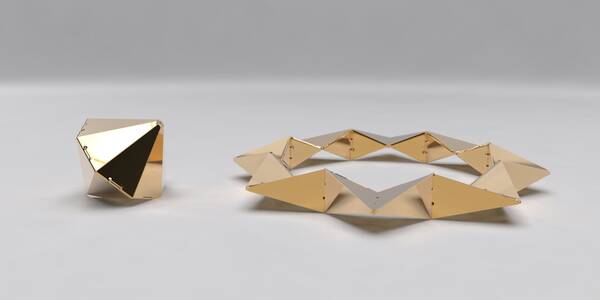Fine Art student Alexis Sevilla finds inspiration at ArtCenter and working at the Main Museum
It’s a busy fall day in downtown Los Angeles. Cars zip down the street, and people on the sidewalk walk quickly to work. In the thick of this hub of activity, Fine Art student and painter Alexis Sevilla sits in the Main Museum, near glass windows looking out onto downtown’s 4th Street.
The non-collecting art museum opened in 2016 in the early 1900s-built Hellman Building, located in downtown’s Old Bank District. With its high white walls, exposed ceilings and ornate columns, the Main has a spacious yet intimate feel. ArtCenter formed a programmatic partnership with the museum in 2018, and a Fine Art course, Environmental Design studio and Product Design course have been meeting there during the Fall term.


Sevilla, who moved to California from Florida soon after high school to attend the College in Spring 2018, has worked at the Main as a gallery assistant since the summer. Balancing a full course load and three other jobs—including working at ArtCenter’s Career and Professional Development office and assisting local artist Ariana Papademetropoulos—she sees the museum as a place of inclusivity. The Main, which has free admission, caters to the downtown L.A. community, from artists-in-residence to the public, which includes homeless people who walk in from nearby Skid Row. Fine Art Chair Laura Cooper, who’s been managing educational opportunities between the two institutions, told Sevilla about the job.
“I think art should be accessible to anybody who wants to learn more about it and see it,” says Sevilla, wearing a necklace that says “Pisces” dangling from her neck. “There’s plenty of gallery positions in L.A., but working here was more interesting to me because of involvement with the community.”

Sevilla drives to the Main from her place in L.A.’s Highland Park. During her shift, she greets visitors and helps them look at check lists of works on view, and also meet artists. For lunch, she walks around downtown, visiting spots such as the food booth-packed Grand Central Market.
In July, the Main trained Sevilla ahead of the museum’s summer 2018 exhibition Milton Davis and Vickie Uyeda: Common Ground. The exhibit featured pieces created during the artists’ time in the adult art program at the Exceptional Children’s Foundation (ECF), a nonprofit dedicated to individuals with developmental disabilities. Materials were printed in both English and Spanish.
“It’s great for someone to be interested in the work and for me to talk to them in Spanish, and see how excited they get,” says Sevilla, who’s bilingual.

Sevilla fills her own art with vibrant streaks of color, and inspiration from her mother’s family in Puerto Rico and her father’s journey immigrating to the U.S. from Honduras. Born in New York City, where her mom was raised and where Sevilla lived until she was about 8, Sevilla grew up drawing the family’s dog Spanky.
Later, as a high school student in South Florida, Sevilla painted and took photos while also working at a community arts center, forging her path to ArtCenter. Her pieces range from large acrylic, gouache, oil and pastel abstract self-portraits to patterned three-layer silkscreen prints. Her love of color stems from painter Helen Frankenthaler and NYC’s Color Field painters in the ‘40s and ‘50s.
“ArtCenter lets you build your schedule and guide your own career, and that was appealing to me,” says Sevilla. “It’s nice to see how much everyone cares about each other, and is open to other people’s feelings and work. Technically you’re in class with your competition, but there’s no sense of anybody trying to get ahead.”

The Spring 2018 course Rethinking Art taught by Assistant Professor Alex Kroll, and Summer 2018 course 2D Intensive 1 taught by faculty members Kenyatta Hinkle and Joshua Holzmann also helped Sevilla grow. “It was ok if you tried and failed,” says Sevilla, who is currently taking Fine Art Assistant Professor Olga Koumoundouros’ socially minded course Social Practice 1 at the Main.
In the aftermath of Hurricane Maria, which impacted her grandparents, aunts, uncles and cousins in Puerto Rico, Sevilla injected her work with more personal weight. For a Summer 2018 series, Sevilla ordered fabric dyed or woven in Honduras—not as lush, green and boldly colorful as Puerto Rico, she says—and interviewed her dad about the interiors of the homes he lived in. She also created work with aerial views of places her mom lived in Puerto Rico and NYC.
“I’m not only creating a narrative by painting, I’m also including things that are representative from where I come from and my parents come from,” she says. “To have that contrast—between my mom and my dad—is something that blends into my work. I’ve become very aware of my position as an artist.”











